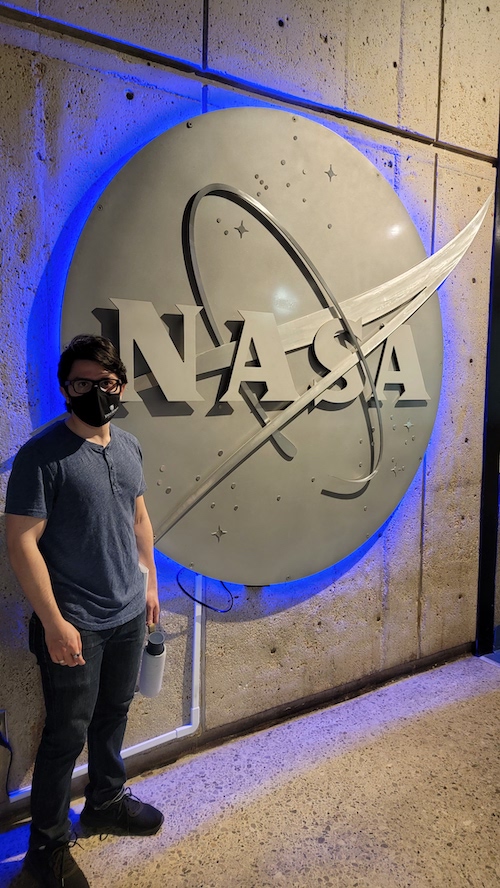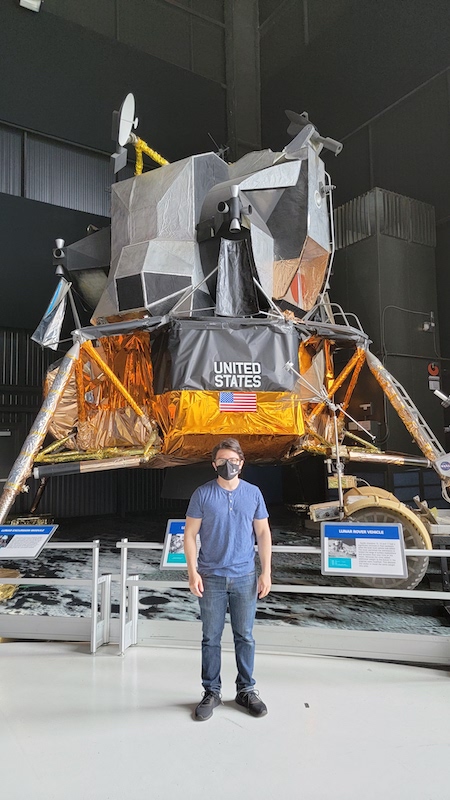 Miguel Díaz-López ’20, now a third-year doctoral student in the Department of Mechanical Engineering at John Hopkins University, has been awarded two national research fellowships: the National Defense Science and Engineering Graduate (NDSEG) Fellowship and a NASA Space Technology Graduate Research Opportunity (NSTGRO) award.
Miguel Díaz-López ’20, now a third-year doctoral student in the Department of Mechanical Engineering at John Hopkins University, has been awarded two national research fellowships: the National Defense Science and Engineering Graduate (NDSEG) Fellowship and a NASA Space Technology Graduate Research Opportunity (NSTGRO) award.
 “I have dreamed of entering the aerospace industry and being at the cutting edge of technology for most of my life,” said Díaz-López.“With these fellowships, I have reached a point where not only am I just at the cusp of achieving that dream, but I also have some major players like the DoD and NASA who believe in my abilities and future potential.”
“I have dreamed of entering the aerospace industry and being at the cutting edge of technology for most of my life,” said Díaz-López.“With these fellowships, I have reached a point where not only am I just at the cusp of achieving that dream, but I also have some major players like the DoD and NASA who believe in my abilities and future potential.”
While he was awarded both fellowships, at this time the College alumnus is only able to select one to pursue. Ultimately, he decided on the NSTGRO award with NASA, but will still pursue the research topic of particle deposition in jet engines that he proposed for the NDSEG fellowship with the Department of Defense.
During his undergraduate years at Manhattan College, Díaz-López studied mechanical engineering with a minor in physics, was named valedictorian of the class of 2020, and was a member of the Tau Beta Pi and Pi Tau Sigma honor societies, jazz band, and orchestra. In 2019, he was one of 496 students nationwide selected for the Barry Goldwater Scholarship.
“There are not too many students over the years with whom I have worked that are more deserving of recognition and academic merit than Miguel Díaz,” said Brother Dan Gardner, FSC, current interim president of the College. “Beginning as an undergraduate, Miguel's precision to detail and advanced research skills earned him a Goldwater Scholarship and many opportunities for research around the world. The NASA Scholarship is yet one more proof of his continuing dedication to the pursuit of knowledge through research.”
At NASA, he’ll be working under an umbrella of research called the Plume-surface interaction (PSI), a topic that will build off of a project he had previously worked on at Alabama's Marshall Spaceflight Center. His proposal will further investigate how temperature and temperature gradients affect the dynamics of PSI and the potential ways of predicting particle behavior and mitigating damage to a landing spacecraft.
“Since I accepted the NASA fellowship, every summer for the next few years I will be at a NASA facility of my choosing for 10 weeks where I get to perform experiments related to my research with other NASA scientists,” said Díaz-López. “I will also be paired with a mentor who will be my liaison so I can access any resources from NASA that I may need. In a sense, I work directly with NASA now and it's just unbelievable.”
NASA’s NSTGRO sponsors U.S. citizen and permanent resident graduate students who show the potential to contribute to their goal of creating innovative new space technologies. Researchers, like Díaz-López, will perform innovative research at their respective campuses and at NASA Centers.
–by Taylor Brethauer ’19